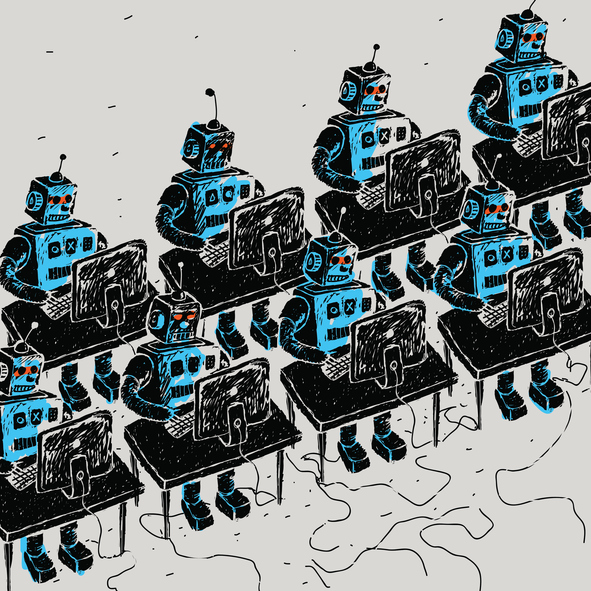Six emerging roles that are reshaping the workplace
- HRM Asia Newsroom
- Topics: Digital Transformation, Features, Home Page - Features, US

I was recently in New York for a Wall Street Journal conference, where I served as a panelist speaking on how company leaders can find and retain the talent and resources they need. As I prepared my remarks, I came across some very interesting emerging jobs, such as “commercial space pilot” to navigate vessels for space tourism or “organ-implant designer.” It struck me anew that, as our world changes, roles will increasingly be a greenfield.
You’ve probably heard the statistic that 65% of children today will work in jobs that don’t exist yet. As a leader in your company’s talent practices, you may be wondering, “How do I hire talent to equip us for the future, when the future is morphing so rapidly?”
I can empathise. During the decade I was CHRO of Gap Inc., the retail industry was rocked by change—and it still is. Roles were evolving—from the retail store in Iowa or Texas to corporate headquarters in San Francisco to global manufacturing facilities.
It’s understandable to think of mapping future talent as daunting due to the constantly changing nature of business. But I prefer to over-index on the exciting aspects of this challenge. Few executives globally have the opportunity to shape the future of our workforces and workplaces. In my current role, I’m lucky enough to help some of these leaders navigate talent and organisation in a new era. I thought I’d share with you several of the roles we see emerging in the talent landscape. They are industry-agnostic and HQ-related, but they could spur some interesting conversations in your company’s talent planning.
Trust Leaders. Trust is now so crucial to corporate competitiveness; two-thirds of consumers say they are attracted to a brand because it does what it says it will do and delivers on its promises. Trust leaders will not only protect customer data but also will help incorporate safety into every aspect of the customer experience. Even this definition is somewhat limited, as I could see this role growing to encompass trust for a company’s brand and corporate citizenship.
Marketing Monitors. These individuals will also have a role to play in trust. Functioning as an Ombudsperson, they will monitor automated outputs from bots or artificial intelligence, ensuring they mesh with—rather than contradict—brand values. Enterprise use of AI grew 271% over the past four years, so this type of oversight will become more crucial.
Growth Hackers. I’m sure we all know someone wired for this job—a person who enjoys rapid, almost restless, experimentation. Someone always in search of the Next Big Thing. These people will contribute to product and service development, driving innovation to unlock growth.
Chief Storytellers. This role already exists, just not in large numbers. Steve Clayton, Microsoft’s chief storyteller, put it best when describing his job: “It’s very easy to slip into celebrating yourself and celebrating your product, but it’s a lot more rewarding to go and find stories of where those products actually have an impact.” He shares the story of how he got this role in his TEDx Talk—and it’s worth watching. Storytellers rally around the larger brand and purpose, as well as how what a company does represents it, driving deeper emotional connections with customers.
Futurologists. Futurists have hit the Fortune 500—Ford Motor Co. employs in-house futurist Sheryl Connelly. I read about Sheryl in Business Insider a few years ago, where she described her role: “My job is specifically designed not to talk about cars or trucks. We have no shortage of automotive expertise inside the company. My job is to slow down the conversation and ask, ‘Are you sure young people will always see the car as a status symbol?’ … I call myself the ‘polite contrarian.’ ” What company doesn’t want to identify the next huge trend, from a surge in vegan eating to the sharing economy? But few organisations have institutionalised the role versus hiring ad hoc.
Cause Matchmakers. Purpose-led companies are the future, so cause matchmakers could be the evolution of sponsorship leaders. They will identify a broad range of opportunities to do good and deliver something back to customers and society at large. For example, REI funds research on the link between outdoor activities and health. A cause matchmaker could take that a step further, creating an ecosystem of organisations whose purpose matches REI’s. The matchmaker functions as the corporate lynchpin, to greater good.
I could mention so many more exciting new roles, but I’ll stop there. Did any of these spark thoughts of your organisation? If so, it’s not too early to be hiring this type of talent. Hiring for tomorrow’s needs today is how many corporate titans broke the mold for true innovation.
I’ll leave you with a story: One of my team members has a gifted 14-year-old son, who recently attended a STEM job fair. When he arrived home, my colleague was slightly bewildered at his descriptions of careers in vegetation management, neutrino physics and biomimicry architecture. But she said his eyes lit up as the words tumbled out of his mouth.
He is not many years away from being hirable. And I would venture to guess that job descriptions far more futuristic and “out there” wouldn’t rattle him one iota. I also think that older versions of him have recreated themselves for the new job market, equally as excited about the future.
That’s the kind of talent we need to tap for roles that don’t even exist yet. And it’s not too soon to start.
This story was originally published on HRExecutive.com, HRM Magazine Asia’s sister publication in the US.
The author is Eva Sage-Gavin, a distinguished HR thought leader and former CHRO with more than 30 years of broad experience in Fortune 500 global consumer, technology and retail corporations. She currently serves as the senior managing director for Accenture’s global talent & organization consulting practice






